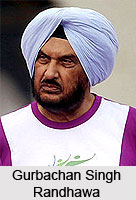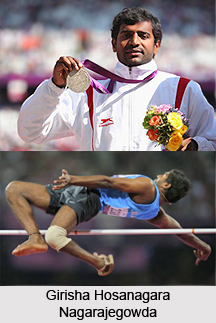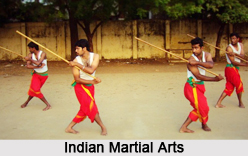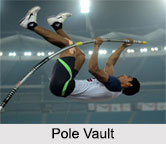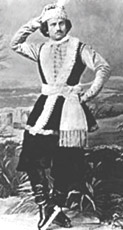 History of Ice Skating goes back to 3000 BC. It is a game played with pair of skates, on ice. While talking about the history of Ice Skating, it should be said that the game was widely played in the frozen canals and waterways of Scandinavia and the Netherlands, about 1000 years ago. The first material proof of the game of Ice Skating was found in a biography of Thomas Beckett written by his former clerk William Fitzstephen in about 1180 and the Dutch artist Johannes Brugman presented the Ice Skating in a work of art in the 15th century. The first work of art by a major artist to feature ice skating as a main theme was made in the picture of Saint Lidwina. The Dutch people at that time used the skates made of animal bones as their footwear and glided across the frozen lakes and rivers at the time of winter. They used to call these skates, as "Schenkel" in Dutch that means, "Leg bone". After that, the Dutch started using wooden platform skates with flat iron bottom runners around the 14th Century. They still used to attach the skates to their shoes with leather straps. They also used some poles while skating. Then around the years of 1500, the Dutch invented a narrow double-edged blade that was made of metal. With this invention, the skater became able to push and glide with his feet only.
History of Ice Skating goes back to 3000 BC. It is a game played with pair of skates, on ice. While talking about the history of Ice Skating, it should be said that the game was widely played in the frozen canals and waterways of Scandinavia and the Netherlands, about 1000 years ago. The first material proof of the game of Ice Skating was found in a biography of Thomas Beckett written by his former clerk William Fitzstephen in about 1180 and the Dutch artist Johannes Brugman presented the Ice Skating in a work of art in the 15th century. The first work of art by a major artist to feature ice skating as a main theme was made in the picture of Saint Lidwina. The Dutch people at that time used the skates made of animal bones as their footwear and glided across the frozen lakes and rivers at the time of winter. They used to call these skates, as "Schenkel" in Dutch that means, "Leg bone". After that, the Dutch started using wooden platform skates with flat iron bottom runners around the 14th Century. They still used to attach the skates to their shoes with leather straps. They also used some poles while skating. Then around the years of 1500, the Dutch invented a narrow double-edged blade that was made of metal. With this invention, the skater became able to push and glide with his feet only.
In the ending part of the 16th century, a Scotsman invented a pair of all-iron skates in the year of 1592. In the early part of 17th century, the Dutch people used to travel on blades between villages. This was a very useful and popular means of transport to them. The Dutch were also taking this as a game during that time and they started founding some skating clubs. In the year of 1642, they founded the first skating club named as "The Skating Club of Edinburgh". Skates that are entirely made of iron were introduced in the 17th century. The English people were also using the skates in various means. The English books of around the 12th century refer that the English people did skate at that time. The English organised the world`s first Speed Skating Race in 1763 on the Fens in England. This was the time when the sport started to spread out in other countries. The sport was introduced in North America in the later part of the 18th century and by the end of the 18th century, European colonists introduced it into America and Canada
In the middle part of the 19th century, E. V. Bushnell of Philadelphia invented a lighter, sharper, all-steel blade in order to add more speed to the sport. After a few years, Jackson Haines, a famous American skater invented a new two plate all metal blade in the year of 1865. In the 1870`s, he added a new aspect in his skates, that is the first toe pick. With this addition, the toe pick jumps became possible for the skaters. The first ever tournament in Ice Skating organised by the Dutch was the very first World Championship in 1889. The inventions and evolutions of the skating blades continued and in the year of 1914, John E. Strauss, a blade maker from St. Paul, Minnesota, invented the first closed toe blade. This blade was made from only one piece of steel and made the skates lighter and stronger.
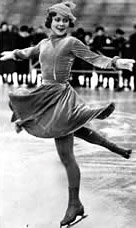
As Ice Skating can be enjoyed both as a recreational activity and also as a competitive sport, this is very much popular among the people of the world. In the cold countries where the winters are long and cold, people enjoy the recreational Ice Skating a lot. People in warmer countries enjoy this sport in the indoor rinks. There are a lot of outdoor and indoor Ice Skating rinks in different parts of the world. Amongst them, the largest outdoor Ice Rink is the `Fujikyu Highland Promenade Rink` in Japan. It was built in the year of 1967 and it possesses a huge ice area of 165,750 square feet (3.8 acres). The first artificial Ice Rink of the world was built at London, England by John Gamgee in 1876. It was named as the `Glaciarium` and was refrigerated mechanically. Understanding the basic techniques, proper equipment and clothing, and paying attention to safety issues are important aspects of Ice Skating.
The game of Ice Skating can be further categorized into Figure Skating and Speed Skating as a competitive sport. In the Figure Skating athletic and artistic skills of the skater are required very much and the Speed Skating means skating on oval ice tracks. As a sport, the Ice Skating was made popular by two great skaters like Jackson Haines of America in the decades of 60`s and 70`s of the 19th century and Norway`s Sonja Henie popularized the Figure Skating during the decades of 1920s and 1930s. The game of Ice Skating is really a great thing to watch. The skaters usually got very flexible body and when they skate, it seems like they are gliding over the rinks and maintaining their positions almost effortlessly. The Figure Skating can be associated to an art form very easily as it is performed both as individually and in pairs. Though the game of Ice Skating started as a mode of transport, it is a very much professional sport now and it is also played at the Winter Olympics. In the contemporary time, the popularity of Ice Skating is increasing in a great speed everyday.








